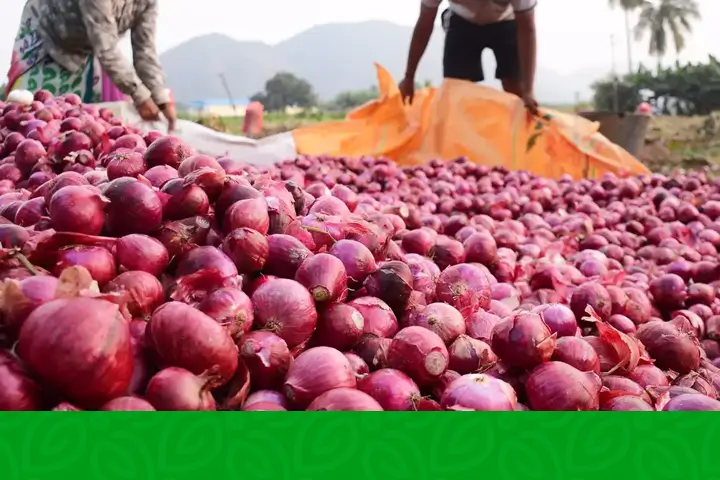
Rising Costs Trigger a Demand-Supply Crisis with Far-reaching Implications
Unveiling a Supply Crunch
A storm has swept across Kenyan kitchens as the onions, a staple in countless households, face an alarming scarcity. The culprit? An unforeseen twist across the border, where Tanzania’s decision to hike onion prices has set off a chain reaction. As shelves grow emptier and prices soar higher, Kenyans find themselves in the grip of a vegetable crisis that threatens not only their culinary traditions but also their pocketbooks.
An Inflated Reality
As the Tanzanian government adjusts its onion prices to favor drier variants with extended shelf lives, Kenyan tables bear the brunt. The aftermath is sobering – onions, once a humble ingredient, have surged by a staggering 40%. It’s not just onions that are affected; eggs and sugar have swelled by 60% and 55% respectively. The distressing reality is projected to intensify, casting a shadow over essential commodities and the wallets of Kenyan consumers.
The Tale of Spiraling Costs
The Central Bank of Kenya’s latest Monetary Policy Committee Meeting minutes unveil the onion’s tumultuous journey. Both bulbs and leeks have emerged as the frontrunners in year-on-year price escalation, a staggering 22.2% surge as of July 2023. Rooted in this surge is a scramble among traders, who are exploring alternative import avenues in Ethiopia and Somalia. These new routes, while promising, burden the process with elevated transportation costs compared to Tanzania’s familiar terrain.
The Tanzania Conundrum
Tanzania has been a vital onion supplier for Kenya, with 50% of the country’s red onions making their way from across the border. This reliance, however, has sprung a vulnerability that is felt acutely during times of disruption. The current scarcity draws from a blend of challenges: dwindling local production due to rainfall woes, escalating post-harvest losses, and the ripple effects of pricing dynamics. To add fuel to the fire, the cost of irrigation, an average of Ksh5,000 per day, and a substantial increase in electricity expenses (over 60% between July 2022 and 2023), have collectively inflated onion production costs by Kes 40 per kg.
Consumer Pockets and the Onion Equation
Consumers are feeling the squeeze as they witness the tripled pricing of onions, skyrocketing from Kes 7 to Kes 20 per kg, translating to approximately Kes 150 for a kg. Farmers are not immune either; their harvests have been dampened by reduced rain, leading to lowered yields. In this landscape, the term “profit” bears a new weight – it’s a result of scarcity, magnifying the pricing complexities.
A Glimpse of Hope
Amidst the onion saga, there’s a glimmer of hope. Onions hold the promise of a swift turnaround, maturing in just two to three months. Farmers like Njagi assure Kenyans that once production revs up again, the supply will stabilize, gradually alleviating pricing pressures. However, the current situation is emblematic of the fragile nature of food security, where external factors wield an undeniable influence.
Counting Losses Across Borders
While Kenya grapples with a shortage, across the border in Ghana, onion traders face a contrasting predicament. The closure of the Niger border, a result of a West African coup, has rendered several bags of onions unsellable. What was once a valuable commodity has now turned into financial loss as onions wilt and rot.
In the heart of this onion odyssey lies a poignant reminder of the intricacies of global supply chains. The humble vegetable’s scarcity unearths a complex web of interconnected factors that shape economies and affect lives. As Kenyan kitchens seek solace in alternatives and solutions are explored, the onion shortage serves as a vivid testament to the delicate balance that sustains our food systems.
Stay updated with the latest farming tips and agriculture industry news from Africa by subscribing to our newsletter. Don’t miss out on valuable insights and updates. Follow us on Twitter, LinkedIn, and Facebook to join our farming community and stay connected with us.



















